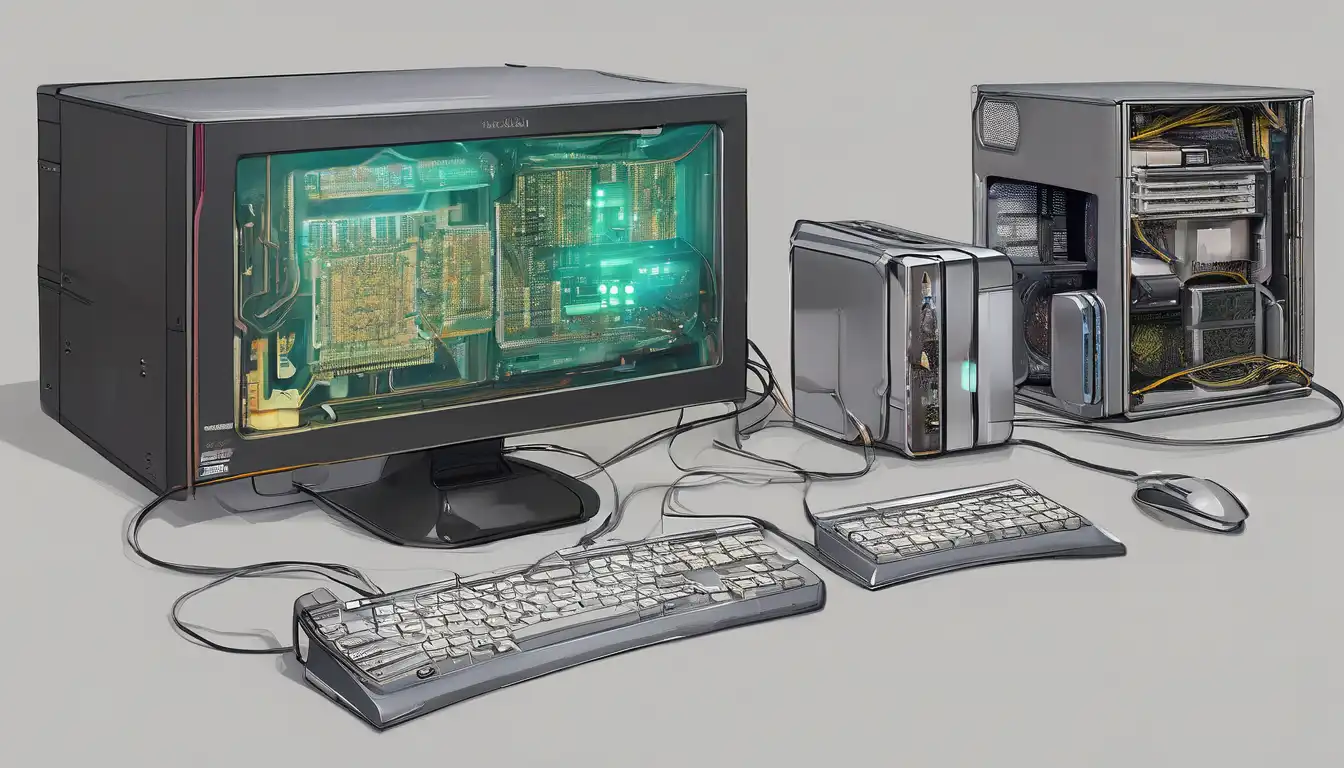Revolutionary Advances in Computer Hardware Technology
The landscape of computer hardware is undergoing a seismic shift, with innovations emerging at an unprecedented pace. From quantum computing breakthroughs to AI-optimized processors, the latest developments are reshaping how we interact with technology. These advancements aren't just incremental improvements—they represent fundamental changes in computing architecture that promise to redefine performance standards across all sectors.
Next-Generation Processors: Beyond Moore's Law
Processor technology has evolved dramatically, with chip manufacturers pushing beyond traditional silicon limitations. The latest CPUs feature advanced architectures like chiplet designs, where multiple smaller chips work together as a single processor. This approach allows for better thermal management and higher core counts without sacrificing efficiency. Companies like AMD and Intel are delivering processors with up to 128 cores for consumer markets, while specialized AI chips from NVIDIA and Google are optimized for machine learning workloads.
Quantum computing represents perhaps the most exciting frontier in processor technology. While still in early stages, quantum processors are showing promise for solving complex problems that would take classical computers centuries to process. Major tech companies are investing heavily in quantum research, with practical applications expected within the next decade.
Graphics Cards: The AI Revolution
Modern GPUs have transcended their gaming origins to become essential tools for artificial intelligence and scientific computing. The latest graphics cards feature dedicated AI cores that accelerate machine learning tasks by factors of 100x or more. NVIDIA's RTX 40-series and AMD's RDNA 3 architecture incorporate real-time ray tracing and AI-powered upscaling technologies that deliver photorealistic graphics while maintaining high frame rates.
These advancements aren't just for gamers—researchers are using powerful GPUs to simulate molecular interactions, climate patterns, and even entire galaxies. The parallel processing capabilities of modern graphics cards make them ideal for handling massive datasets and complex calculations simultaneously.
Storage Solutions: Speed Meets Capacity
Storage technology has seen remarkable improvements in both speed and reliability. PCIe 5.0 SSDs now offer read speeds exceeding 12,000 MB/s, making system boot times and file transfers nearly instantaneous. The latest NVMe drives utilize 3D NAND technology with up to 232 layers, providing unprecedented storage density while maintaining excellent endurance ratings.
Cloud storage integration has become seamless with modern hardware, allowing for hybrid storage solutions that combine local speed with cloud accessibility. Enterprise-level storage systems now incorporate AI-driven predictive caching that anticipates data needs before users even request them.
Memory Innovations: Faster and Smarter
DDR5 memory has become the new standard, offering speeds up to 8400 MT/s while consuming less power than previous generations. The latest memory modules feature on-die error correction and advanced power management systems that optimize performance based on workload demands. For high-performance computing, HBM3 (High Bandwidth Memory) provides unprecedented data transfer rates exceeding 6 TB/s.
Non-volatile memory technologies like Intel's Optane are bridging the gap between RAM and storage, offering near-RAM speeds with persistent storage capabilities. This technology is particularly valuable for database applications and large-scale scientific computing where rapid data access is critical.
Cooling Systems: Silent and Efficient
Advanced cooling solutions have become essential as component power densities increase. Liquid cooling systems have evolved from exotic enthusiast options to mainstream solutions, with all-in-one units offering excellent thermal performance without maintenance requirements. Phase-change cooling and immersion cooling technologies are pushing the boundaries of heat dissipation, allowing components to operate at higher clock speeds for longer periods.
Smart cooling systems now incorporate AI algorithms that predict thermal loads and adjust fan speeds proactively. These systems can reduce noise levels by up to 50% while maintaining optimal temperatures, creating quieter computing environments for both home and office use.
Connectivity: The Wireless Future
Wi-Fi 7 technology is set to revolutionize wireless connectivity with theoretical speeds up to 46 Gbps and significantly reduced latency. This advancement will enable seamless 8K streaming, virtual reality applications, and real-time cloud gaming without compression artifacts. Bluetooth 5.3 offers improved audio quality and lower power consumption for peripheral devices.
Thunderbolt 4 and USB4 provide universal connectivity solutions with speeds up to 40 Gbps, supporting multiple 4K displays and high-speed data transfer simultaneously. These standards are becoming ubiquitous across devices, simplifying connectivity between computers, displays, and peripherals.
Power Supply Innovations
Modern power supplies have become remarkably efficient, with 80 Plus Titanium-rated units achieving up to 96% efficiency under typical loads. Digital power supplies now feature software control interfaces that allow users to monitor power consumption in real-time and optimize efficiency based on system requirements. Modular designs reduce cable clutter and improve airflow within computer cases.
For mobile computing, gallium nitride (GaN) technology has enabled smaller, more efficient power adapters that generate less heat while delivering more power. This innovation is particularly valuable for laptops and mobile devices where portability and battery life are paramount concerns.
The Future of Computer Hardware
Looking ahead, several emerging technologies promise to further transform computer hardware. Neuromorphic computing, which mimics the human brain's neural structure, could revolutionize AI processing efficiency. Optical computing, using light instead of electricity, might eventually replace electronic components for certain applications. 3D chip stacking will continue to increase component density while improving performance per watt.
As these technologies mature, we can expect computers to become more powerful, efficient, and specialized for specific tasks. The boundary between hardware and software will continue to blur as AI-driven optimization becomes integral to hardware design and operation. For consumers and professionals alike, these innovations mean faster, more reliable computing experiences that adapt to individual needs and workflows.
The rapid pace of hardware innovation shows no signs of slowing, with each breakthrough opening new possibilities for how we work, create, and interact with technology. Staying informed about these developments is essential for anyone looking to make smart purchasing decisions or understand the future direction of computing technology.
